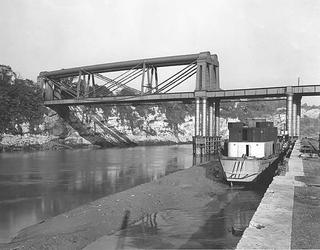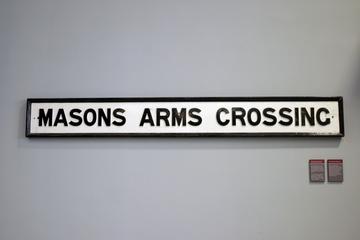
London & North Western Railway/Great Western Railway boundary marker
- Made:
- circa 1870 in Denbighshire
Boundary marker, London & North Western Railway and Great Western Railway Joint Railway, stone, from Brymbo, Denbighshire, north Wales, about 1870.
London & North Western Railway and Great Western Railway stone boundary marker, from Brymbo, north Wales, dating from about 1870.
Boundary markers like this were used to clearly identify the limits of railway land and to distinguish them from adjacent property. They also delineated one railway company’s territory from another’s, for instance to make it clear who was responsible for maintaining a particular stretch of line. This one marked the end of a line jointly operated by the London & North Western Railway (LNWR) and the Great Western Railway (GWR) in nortth Wales.
The network of lines around Brymbo were constructed to transport coal, limestone, iron and other minerals from local quarries and mines. The area was dominated by the GWR, but the LNWR also built competing lines. Negotiations between the two companies resulted in the construction of a three miles long joint railway between Brymbo and Coed Talon. Known as the Wrexham & Minera Railway, it opened in 1872 and gave the LNWR access to Brymbo and the GWR access to Mold. At first the two companies ran trains on alternate days! The line was operated until 1950.
The boundary marker is a practical design in dressed sandstone, with an arched top and deep base. The inscription on the face reads "L & N.W. & G.W. Joint Railway".
Details
- Category:
- Railway Infrastructure
- Object Number:
- 1998-9502
- Materials:
- stone
- Measurements:
-
overall: 1180 mm x 410 mm x 280 mm,
- type:
- boundary marker
- credit:
- British Rail, Clapham




